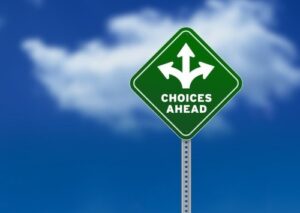Self-Control: What do I do with Guilt?
Wouldn’t it be great to build up our self-control “muscles?” More “staying power” could make a big difference in so many areas. What if we could increase our ability to:
- Say “no” to that last piece of pie.
- Hold our temper a little longer.
- Save some extra money instead of blowing it on the next cool gadget.
- Study just a little longer when everyone else is outside having fun.
Self-Control
Is it possible to acquire self-control and then build it like you would exercise a muscle? According to a recent compilation of lab experiments on self-control, four emotional characteristics were shown to boost our self-control (Desteno, 2014).
Over the past few weeks, Fuller Life’s blog has explored how to develop the characteristics of gratitude and compassion. Today’s post will focus on the importance of guilt.
Guilt vs. Shame
How can guilt become a motivator to help a person stay on task and achieve goals? In order to understand this better, it is important to shed some light on the distinction between guilt and another important emotion – shame.
In 1971, Helen Lewis, a clinical psychologist at Yale, defined the difference between these two emotions:
“Guilt: I did that horrible thing.
Shame: I did that horrible thing.” (Lewis, 1971)
The difference is subtle, but significant. Guilt is about my behavior. Shame is the experience that tells me that I am worthless.
According to Brené Brown’s recent TED talk, the distinction between these two emotions has a monumental impact on our well-being.
“There’s a huge difference between shame and guilt. And here’s what you need to know. Shame is highly, highly correlated with addiction, depression, violence, aggression, bullying, suicide, eating disorders. And here’s what you even need to know more. Guilt, is inversely correlated with those things. The ability to hold something we’ve done or failed to do up against who we want to be is incredibly adaptive. It’s uncomfortable, but it’s adaptive.”
In other words, guilt is a resilient characteristic. It allows us to bounce back from painful circumstances and mistakes. We are able to learn from our mistakes and stay connected with the people we love. Shame, on the other hand, is like quicksand. It sinks us down into feeling helpless and powerless to change things for the better. Shame makes us want to hide. It pulls us further away from the support of others. The endless downward cycle fuels addiction, anxiety and depression.
Guilt and Self-Control
How is this distinction important when it comes to self-control?
The shame cycle is defeating. The shame cycle disconnects us from others. “I yelled at someone I love… Or, I missed that important meeting. I am worthless, so why bother? Why even try? I am unfixable. It isn’t going to matter anyway.”
A shame response leaves us with nowhere to go.
“Shame is an acutely painful emotion that is typically accompanied by a sense of shrinking or of ‘being small’ and a sense of worthlessness and powerlessness. Shame often leads to a desire to escape or hide – to sink into the floor and disappear” (Tangey and Dearing, 2003).
Conversely, a guilt response is adaptive. “I made a mistake. I yelled at the person I love… Or, I missed that important meeting. I feel terrible about it. I am sorry. I will try to do better next time.”
A guilt response connects us to all of humanity because we all make mistakes. We feel remorse, can change our course and then create something better.
“Guilt is a useful emotion. It pushes people to repair the harm they did. But feelings of shame about oneself seem to motivate people more to want to hide, escape, deny or a lot of times to blame other people” (Bernstein, 2014).
Make a Move Toward Guilt
Below are some resources that provide tools to help us break out of a shame cycle (shame resilience) into a more adaptive guilt response toward self.
- Test of Self-Conscious Affect (TOSCA) is a quick little quiz that shows whether we are more guilt-prone or shame prone.
- Shame Resilience: How can respond to ourselves when we experience shame.
- Brené Brown Listening To Shame
Brené Brown: 3 Things You Can Do to Stop a Shame Spiral
Our next blog will explore authentic pride, another characteristic that builds our capacity for self-control.
Fuller Life Family Therapy is here to support and encourage those on their journey toward a fuller life.
References
Bernstein, E. (November 3, 2014). Guilt Versus Shame: One is Productive, the Other Isn’t, and How to Tell Them Apart. Wall Street Journal.
Brown, B. (March 2012). TED Talk. Listening to Shame. https://www.youtube.com/watch?v=psN1DORYYV0
Lewis, H. (1971). Shame and Guilt in Neurosis. International Universities Press.
Tangey, J., and Dearing, R. (2003). Shame and Guilt: Emotions and Social Behavior. The Guildford Press.










